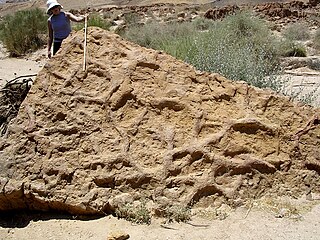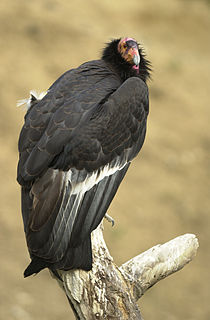 W
WBirds of the World: Recommended English Names is a paperback book, written by Frank Gill and Minturn Wright on behalf of the International Ornithologists' Union. The book is an attempt to produce a standardized set of English names for all bird species, and it is the product of a project set in motion at the 1990 International Ornithological Congress. It is supplemented by a website, the IOC World Bird List, giving updates to the published material.
 W
WThe Catalogue of Life is an online database that provides the world's most comprehensive and authoritative index of known species of animals, plants, fungi and micro-organisms. It was created in 2001 as a partnership between the global Species 2000 and the American Integrated Taxonomic Information System. The Catalogue interface is available in twelve languages and is used by research scientists, citizen scientists, educators, and policy makers. The Catalogue is also used by the Biodiversity Heritage Library, the Barcode of Life Data System, Encyclopedia of Life, and the Global Biodiversity Information Facility. The Catalogue currently compiles data from 168 peer-reviewed taxonomic databases, that are maintained by specialist institutions around the world. As of 2019, the Catalogue lists 1,837,565 of the world's 2.2m extant species known to taxonomists on the planet at present time.
 W
WThe Encyclopedia of Life (EOL) is a free, online collaborative encyclopedia intended to document all of the 1.9 million living species known to science. It is compiled from existing databases and from contributions by experts and non-experts throughout the world. It aims to build one "infinitely expandable" page for each species, including video, sound, images, graphics, as well as text. In addition, the Encyclopedia incorporates content from the Biodiversity Heritage Library, which digitizes millions of pages of printed literature from the world's major natural history libraries. The project was initially backed by a US$50 million funding commitment, led by the MacArthur Foundation and the Sloan Foundation, who provided US$20 million and US$5 million, respectively. The additional US$25 million came from five cornerstone institutions—the Field Museum, Harvard University, the Marine Biological Laboratory, the Missouri Botanical Garden, and the Smithsonian Institution. The project was initially led by Jim Edwards and the development team by David Patterson. Today, participating institutions and individual donors continue to support EOL through financial contributions.
 W
WA holotype is a single physical example of an organism, known to have been used when the species was formally described. It is either the single such physical example or one of several such, but explicitly designated as the holotype. Under the International Code of Zoological Nomenclature (ICZN), a holotype is one of several kinds of name-bearing types. In the International Code of Nomenclature for algae, fungi, and plants (ICN) and ICZN, the definitions of types are similar in intent but not identical in terminology or underlying concept.
 W
WAn ichnotaxon is "a taxon based on the fossilized work of an organism", i.e. the non-human equivalent of an artifact. Ichnotaxa comes from the Greek ίχνος, ichnos meaning track and ταξις, taxis meaning ordering.
 W
WIncertae sedis or problematica are terms used for a taxonomic group where its broader relationships are unknown or undefined. Alternatively, such groups are frequently referred to as "enigmatic taxa". In the system of open nomenclature, uncertainty at specific taxonomic levels is indicated by incertae familiae, incerti subordinis, incerti ordinis and similar terms.
 W
WThe International Bryozoology Association (IBA) is a professional association with international membership specialising in research of the phylum Bryozoa.
 W
WThe International Commission on Zoological Nomenclature (ICZN) is an organization dedicated to "achieving stability and sense in the scientific naming of animals". Founded in 1895, it currently comprises 27 members from 19 countries, mainly practicing zoological taxonomists.
 W
WLinnaean taxonomy can mean either of two related concepts:the particular form of biological classification (taxonomy) set up by Carl Linnaeus, as set forth in his Systema Naturae (1735) and subsequent works. In the taxonomy of Linnaeus there are three kingdoms, divided into classes, and they, in turn, into orders, genera, and species, with an additional rank lower than species. a term for rank-based classification of organisms, in general. That is, taxonomy in the traditional sense of the word: rank-based scientific classification. This term is especially used as opposed to cladistic systematics, which groups organisms into clades. It is attributed to Linnaeus, although he neither invented the concept of ranked classification nor gave it its present form. In fact, it does not have an exact present form, as "Linnaean taxonomy" as such does not really exist: it is a collective (abstracting) term for what actually are several separate fields, which use similar approaches.
 W
WNomenclator Zoologicus is one of the major compendia in the field of zoological nomenclature, compiled by Sheffield Airey Neave and his successors and published in 9 volumes over the period 1939–1994, under the auspices of the Zoological Society of London; a tenth, electronic-only volume was also produced before the project ceased. It contains over 340,000 published name instances with their authorities and details of their original publication, certain nomenclatural notes and cross references, and an indication of the taxonomic group to which each is assigned. An electronic (digitised) version of volumes 1-10 was released online by the uBio project, based at the Marine Biological Laboratory, Woods Hole, in 2004–2005.
 W
WIn zoology and botany, a paratype is a specimen of an organism that helps define what the scientific name of a species and other taxon actually represents, but it is not the holotype. Often there is more than one paratype. Paratypes are usually held in museum research collections.
 W
WPriority is a fundamental principle of modern botanical nomenclature and zoological nomenclature. Essentially, it is the principle of recognising the first valid application of a name to a plant or animal. There are two aspects to this:The first formal scientific name given to a plant or animal taxon shall be the name that is to be used, called the valid name in zoology and correct name in botany. Once a name has been used, no subsequent publication of that name for another taxon shall be valid (zoology) or validly published (botany).
 W
WIn biological classification, taxonomic rank is the relative level of a group of organisms in a taxonomic hierarchy. Examples of taxonomic ranks are species, genus, family, order, class, phylum, kingdom, domain, etc.
 W
WIn biology, a subgenus is a taxonomic rank directly below genus.
 W
WIn biological classification, the term subspecies refers to one of two or more populations of a species living in different subdivisions of the species' range and varying from one another by morphological characteristics. A single subspecies cannot be recognized independently: a species is either recognized as having no subspecies at all or at least two, including any that are extinct. The term may be abbreviated to subsp. or ssp. The plural is the same as the singular: subspecies.
 W
WIn biological taxonomy, a species nova is a new species. The phrase is Latin, and is used after a binomial name that is being published for the first time.
 W
WThe book Svenska Spindlar or Aranei Svecici was one of the major works of the Swedish arachnologist and entomologist Carl Alexander Clerck and appeared in Stockholm in the year 1757. It was the first comprehensive book on the spiders of Sweden and one of the first regional monographs of a group of animals worldwide. The full title of the work was Svenska Spindlar uti sina hufvud-slägter indelte samt under några och sextio särskildte arter beskrefne och med illuminerade figurer uplyste – Aranei Svecici, descriptionibus et figuris æneis illustrati, ad genera subalterna redacti, speciebus ultra LX determinati, and included 162 pages of text and 6 colour plates. It was published in Swedish, with a Latin translation printed in a slightly smaller font below the Swedish text.
 W
WSystema Naturae is one of the major works of the Swedish botanist, zoologist and physician Carl Linnaeus (1707–1778) and introduced the Linnaean taxonomy. Although the system, now known as binomial nomenclature, was partially developed by the Bauhin brothers, Gaspard and Johann, 200 years earlier, Linnaeus was first to use it consistently throughout his book. The first edition was published in 1735. The full title of the 10th edition (1758), which was the most important one, was Systema naturæ per regna tria naturæ, secundum classes, ordines, genera, species, cum characteribus, differentiis, synonymis, locis or translated: "System of nature through the three kingdoms of nature, according to classes, orders, genera and species, with characters, differences, synonyms, places".
 W
WIn biology, a taxon is a group of one or more populations of an organism or organisms seen by taxonomists to form a unit. Although neither is required, a taxon is usually known by a particular name and given a particular ranking, especially if and when it is accepted or becomes established. It is very common, however, for taxonomists to remain at odds over what belongs to a taxon and the criteria used for inclusion. If a taxon is given a formal scientific name, its use is then governed by one of the nomenclature codes specifying which scientific name is correct for a particular grouping.
 W
WIn biology, a type is a particular specimen of an organism to which the scientific name of that organism is formally attached. In other words, a type is an example that serves to anchor or centralize the defining features of that particular taxon. In older usage, a type was a taxon rather than a specimen.
 W
WIn biological classification, especially zoology, the type genus is the genus which defines a biological family and the root of the family name.
 W
WIn zoological nomenclature, a type species is the species name with which the name of a genus or subgenus is considered to be permanently taxonomically associated, i.e., the species that contains the biological type specimen(s). A similar concept is used for suprageneric groups and called a type genus.
 W
WWikispecies is a wiki-based online project supported by the Wikimedia Foundation. Its aim is to create a comprehensive free content catalogue of all species; the project is directed at scientists, rather than at the general public. Jimmy Wales stated that editors are not required to fax in their degrees, but that submissions will have to pass muster with a technical audience. Wikispecies is available under the GNU Free Documentation License and CC BY-SA 3.0.
 W
WZooBank is an open access website intended to be the official International Commission on Zoological Nomenclature (ICZN) registry of zoological nomenclature. Any nomenclatural acts need to be registered with ZooBank to be "officially" recognized by the ICZN Code of Nomenclature.
 W
WA zoological specimen is an animal or part of an animal preserved for scientific use. Various uses are: to verify the identity of a (species), to allow study, increase public knowledge of zoology. Zoological specimens are extremely diverse. Examples are bird and mammal study skins, mounted specimens, skeletal material, casts, pinned insects, dried material, animals preserved in liquid preservatives, and microscope slides. Natural history museums are repositories of zoological specimens